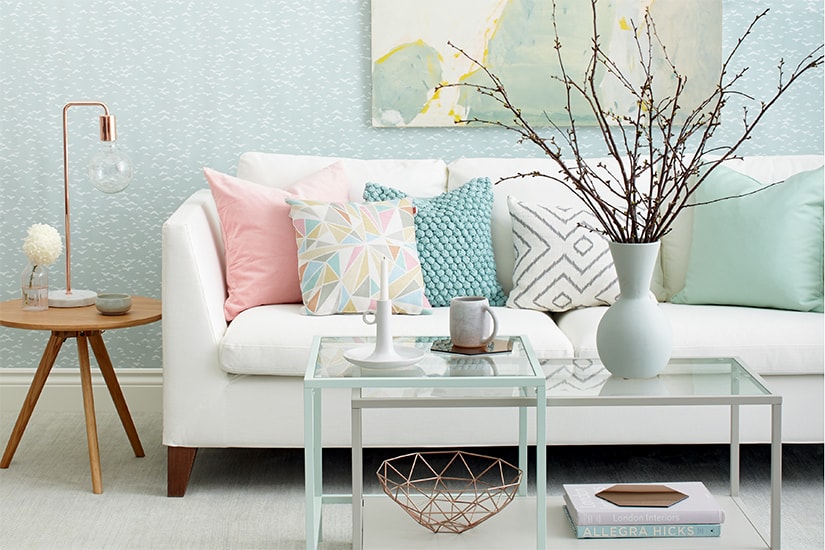Renovations
Light up your life

Renovations
Light up your life
Lighting experts classify lighting in three ways: ambient, task and accent. Ambient light is the general background lighting in any room, typically one or more overhead fixtures that you turn on when you enter. Task lighting, as the name suggests, is targeted at specific areas – such as kitchen countertops – where you'll need light to work. Finally, accent lights spotlight artwork or key architectural features in a room. The trick is to combine the three. There are some key considerations when creating a lighting plan for the various rooms in your home.
Kitchen lights
From before sunrise until after sunset, it's the busiest room in almost any house. It's also one of the hardest to illuminate, with tasks varying from reading the morning paper to prepping and cooking food. For ambient light, designer Candice Olson, host of Divine Design on the W Network, suggests recessed halogen lights, placed about 36 centimetres (14 inches) from the face of the cabinets.
“The wash of halogen brings out the wood in the cabinets. Without that light, they're flat.” You can also install fluorescents on the top of the cabinets to reflect off the ceiling for indirect ambient lighting. Another option is illuminated ceiling fans that provide both lighting and air circulation. Under-cabinet fluorescents are a good way to light up a countertop workspace. They can be hardwired in during renovations, or you can buy plug-in models to retrofit in poorly lit kitchens. Alternatively, overhead track lights can be aimed where needed.
Bright bathrooms
“In a bathroom, we tend to do very little down-lighting,” says Keith Rushbrook, co-owner of the award-winning Toronto interior-design firm II BY IV Design. (2x4, get it?) “With overhead light, all you're accentuating is the top of your head and every bag and wrinkle on your face.” Ideally, the light source should be at head level, such as wall sconces on either side of the mirror. If that's not possible, you can bounce light off soft-coloured or reflective materials. Regardless of placement, Rushbrook suggests using fixtures with soft, warm incandescent bulbs instead of the cold, blue tones of a fluorescent tube.
Bedroom basics
Dimmers in the bedroom make for comfortable mood lighting or reduced intensity for pre-sleep reading. (In fact, the two designers recommend dimmers for every light in every room in the house. They give you the flexibility to adjust to the varying amounts of natural light at different times of the day and year.) Another nice addition is a threeway switch that allows you to turn the lights on when entering the room and turn them off with a bedside switch. For young children's rooms, you should try to avoid using lamps that can topple over. II BY IV Design promotes the kid-friendly practice of mounting light switches at a lower level so your child doesn't have to jump (or climb!) to light up the room.
Tips for living, dining and media rooms
- Light the media room with wall sconces or lamps on either side of the television to avoid glare on the screen.
- Floor or table lamps are a versatile option for reading lights.
- Use built-in halogen or fluorescent lighting in bookshelves and the entertainment unit to illuminate your favourite collectibles.
- A floor-mounted fixture projecting up through a plant creates a dramatic patterned effect on the wall and ceiling.
- Don't forget to budget for accent lighting to highlight your artwork, fireplace or other items worthy of a spotlight.
- One final bit of advice that's applicable to any room: When it comes to lighting, more is better. After all, you can always turn off lights that aren't needed.
Lamp lingo
Incandescent
These old standards are cheap but inefficient – 85 percent of the energy they consume radiates off the bulb as heat, not light.
Halogen
They are a more durable, energy-efficient improvement, and they're favoured by interior decorators for the bright and true light they generate. But be careful not to touch halogen bulbs when replacing them: the oils on your skin will ruin the bulb.
Fluorescent
They are now available in a variety of shapes and sizes in fashionable, home-friendly designs. Designed to fit into regular light sockets, compact fluorescent light bulbs (CFLs) were first introduced in 1980. Today, they are being heavily promoted as versatile, energy-efficient alternatives to incandescent bulbs: a 15-watt CFL produces the same amount or more light than a 60-watt incandescent and will last 10 times as long (with a typical lifespan of 10,000 hours versus 1,000). They cost a lot more – $5 to $10 each for CFLs versus $1 or less for incandescents – but the upfront costs are offset by long-term energy savings. One caution for all types of fluorescents: they contain a trace amount of mercury. Care should be taken with their disposal.
LED
An acronym for “light-emitting diode,” LEDs were first developed in the 1960s. Their durability, long life (up to 20,000 hours) and low energy consumption make them ideal for everything from TV remotes to traffic lights. Today, you can find LEDs for lighting home interiors and exteriors.














Comments